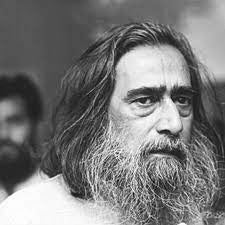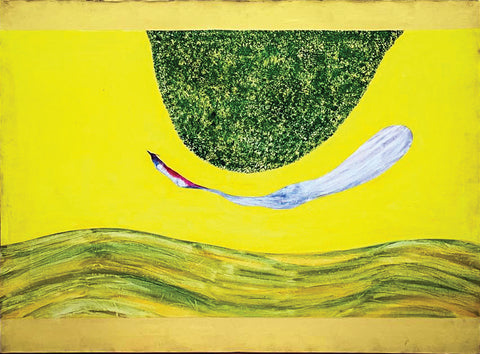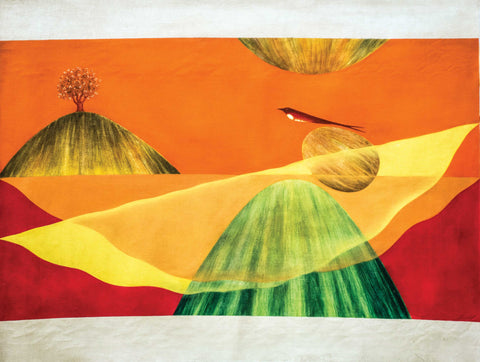Jagdish Swaminathan
Jagdish Swaminathan was born in Simla in 1928. His education in art consisted of short spells at the Delhi Polytechnic and later, in Poland. It was only in the late 50's that he started devoting his time completely to art. He was a member of the Communist Party of India in the mid-50's and worked as a journalist and art critic for the Left magazines. Swaminathan founded the "Group 1890" in August 1962. This group put up their only show in 1963. As a solo artist, he put up about 31 shows and participated in a number of national as well as international exhibitions.
The main feature of his paintings was the simplicity that was rather captivating. The vivid imagery and bright colours were a celebration of the rise of the inner being over the common place. Later on, the well-ordered colour geometry and brush painting, gave way to the use of symbols. The latter was a distinct influence of the tribal arts and he began to use his fingers to apply the pigment in order to achieve the desired effect.
"The Significance of the Traditional Numen in Contemporary Art", a project that he worked on, won him the Nehru Fellowship. He served as a member of the International Jury at the Sao Paolo Biennale, and was also a trustee at the Indira Gandhi National Centre for the Arts. In 1981, he set up the art museum "Roopanker" at the Bharat Bhavan in Bhopal. He served as the director of the institute till 1990.
Swaminathan was awarded the Jawaharlal Nehru Fellowship in 1968 for research on "The significance of the traditional Numan to Contemporary Art". He was active in helping vernacular painters from tribes such as Gond and Bhil to gain international recognition.
Swaminathan’s exhibits with us are two oil on canvases made in 1980 and 1987 respectively.





